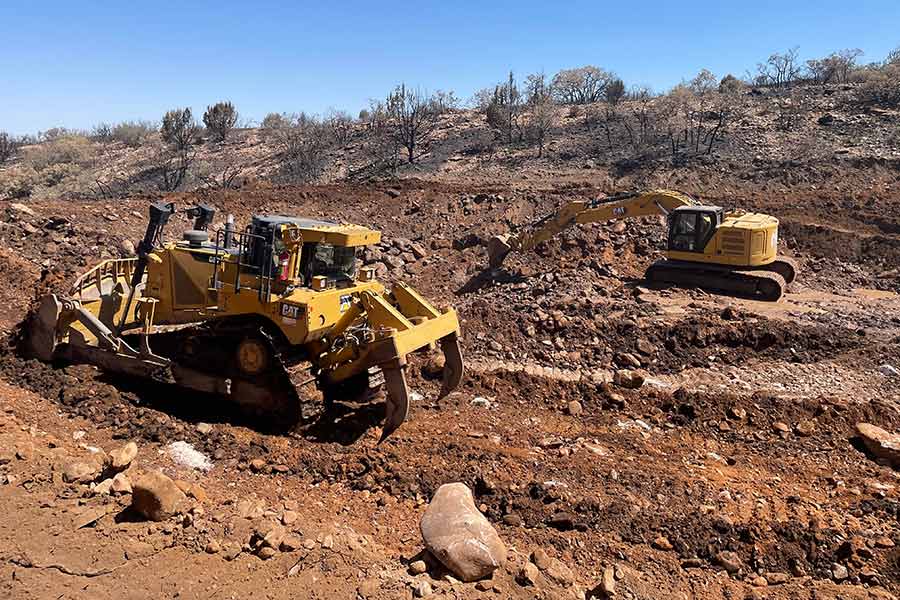Millard County partners with DWR to prevent potential flooding, debris flows after wildfire
Cedar City — The Utah Division of Wildlife Resources partnered with Millard County officials to authorize construction of several debris basins in an effort to prevent debris flows and possible flooding damage after the Halfway Hill Fire in Millard County earlier this year.
In July, the human-caused Halfway Hill Fire burned 11,701 acres, part of which occurred on the Halfway Hill unit of the Fillmore Wildlife Management Area. The 17,493-acre WMA provides crucial winter range habitat for big game in the area.
"Fires of this magnitude often result in significant flash floods and debris flows when rain falls within the fire footprint," DWR Regional Wildlife Habitat Manager Gary Bezzant said. "This threat can remain for multiple years following a fire."
The Millard County Road Department also recognized this potential threat and began seeking locations to construct multiple debris basins in hopes of preventing catastrophic flooding and damage to roads in the area. Debris basins are used to capture sediment, gravel, boulders and vegetative debris that are washed down canyons during storms, but they still allow water to flow downstream. After failing to secure permission on other properties, the county contacted the DWR to pursue construction of the basins on the WMA.
"As a commissioner of Millard County, we're grateful that the DWR understood what we needed to do and they said 'go ahead,' and I appreciate that," Millard County Commissioner Bill Wright said. "We have a lot of small cities in Millard County that don't have the needed funding to pay for something like this, so the county has been proactive to step in and help. The construction of these basins is a win-win for all parties involved. The county was able to safeguard its citizens as economically as possible, and the resulting basins will also provide water to local wildlife."
Within 24 hours of the request, the DWR was able to provide authorization to construct two debris basins. Work began shortly after, and within one week, both basins were finished and ready for use on July 22.
"When rain hits the mountain, the water travels through the town of Fillmore and heads out through the desert over 15 miles," Millard County Road Department Supervisor Brandon Winget said. "The water crosses many county roads through small culverts on its way, and if we don't catch the debris, it can cause major damage to our road system costing us hundreds of thousands of dollars in repairs."
"A collaborative project like this not only strengthens bonds between state and local entities, but also accomplishes goals that otherwise may not be possible," Bezzant said.
The flooding prevention was an important part of the rehabilitation of this area. Other phases of the restoration work will include:
- Reseeding the areas around the basins with desirable plant species for local wildlife.
- Aerial seeding and subsequent chaining of the burned areas to jump start restoration of beneficial plants for wildlife and to prevent future erosion.
- Reconstruction of boundary fences burned in the fire.
- Weed monitoring and control to prevent detrimental changes to the vegetation in the area.
WMAs in Utah
The Fillmore WMA is one of 193 wildlife management areas and waterfowl management areas in Utah. The DWR started acquiring the areas in the late 1940s for several reasons:
- To conserve critical habitats for wildlife
- To help minimize and mitigate wildlife depredation on private property
- To provide anglers and hunters — who provide funding for the WMAs through the purchase of a fishing or hunting license — a place to hunt and fish in Utah
Visit the DWR website to learn more about WMAs in Utah.

















